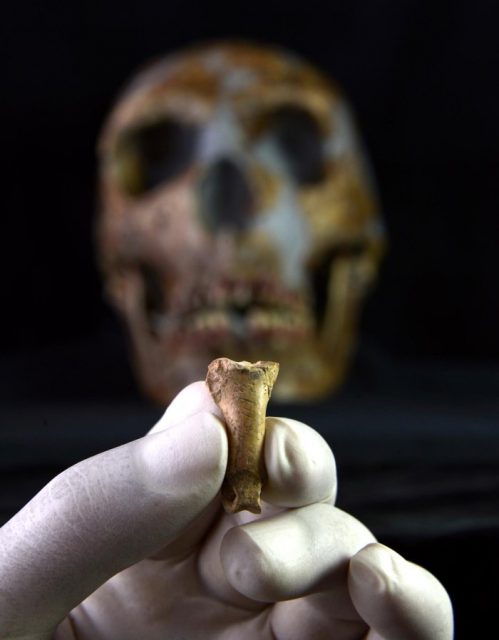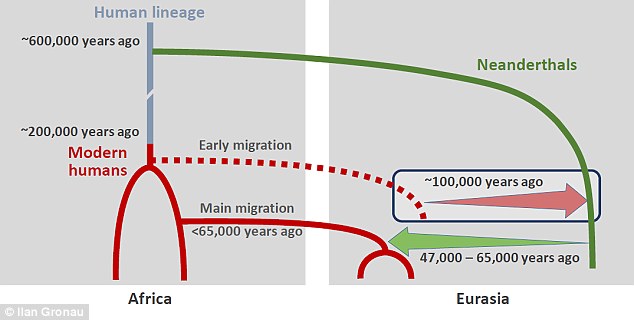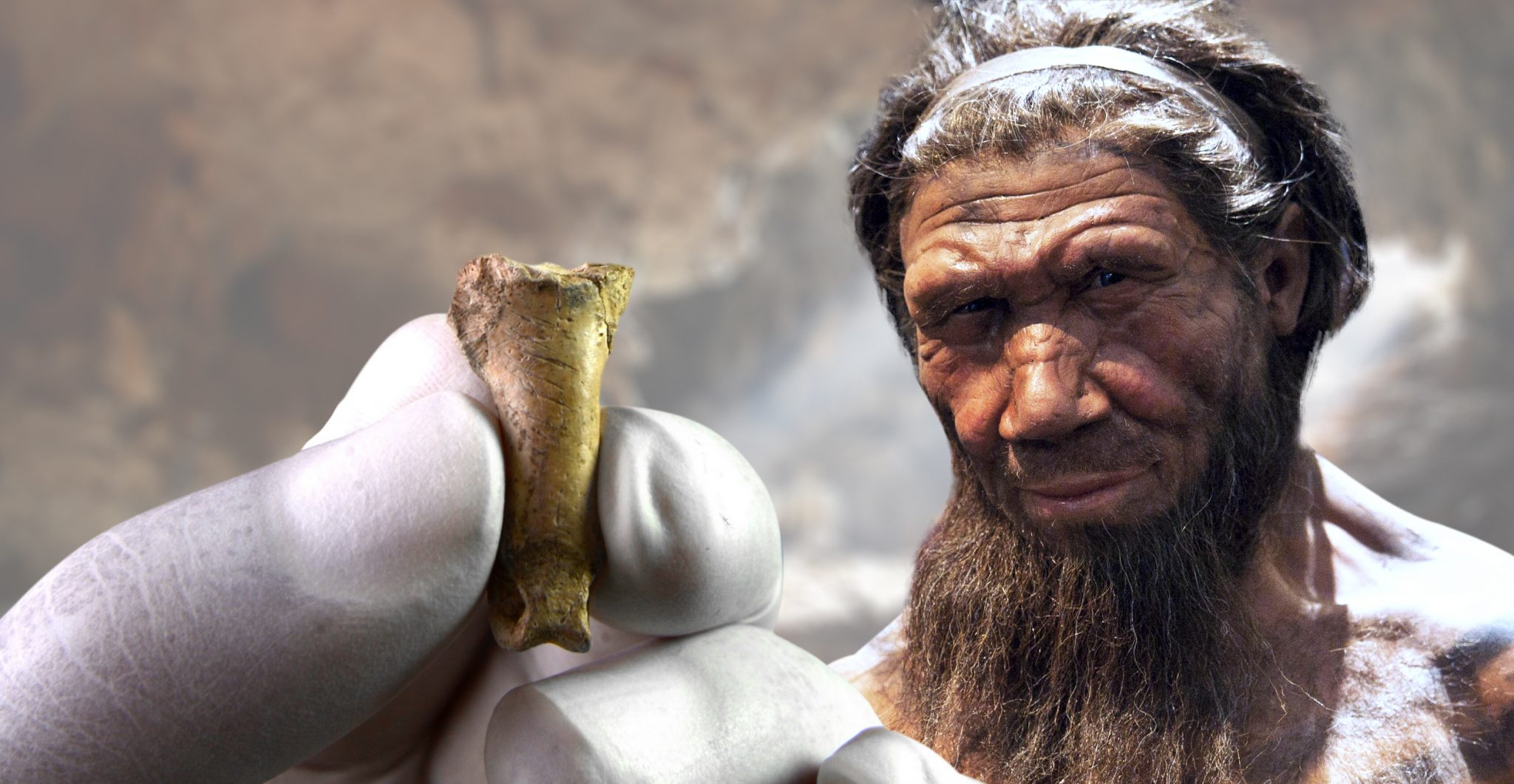An intriguing find which could be the last Neanderthal necklace was found. Neanderthals lived in Eurasia from about two hundred thousand years ago to about thirty thousand years ago, from the beginnings of the mid Palaeolithic era toward the end of the Ice Age. They looked similar to us but had wider noses, higher cheekbones, and they were shorter and stockier, presumably to conserve heat. Like today, early humans decorated their bodies with items they believed said something about themselves.
An archaeological site in Cova Foradada, a cave along the Mediterranean coast of Spain, has revealed a 40,000 year old carved eagle talon most likely used as a pendant or charm for jewelry and is being touted as the “last Neanderthal necklace”. According to Science Alert, Antonio Rodríguez-Hidalgo, an archaeologist from the Institute of Evolution in Africa claims that from the early mid-Paleolithic era, Neanderthals put symbolic meaning in eagle’s talons.
The bones from the left foot of a Spanish imperial eagle were found in the cave as well with no evidence of an animal attack, but cuts made with a sharp instrument were evident. Heritage Daily reports the excavation was begun in 1997, and the dig is currently led by Juan Ignacio Morales and Artur Cebrià.

Talons were popular with ancient humans and have been found before, originating from almost forty-two thousand to about one hundred thirty thousand years ago, but this is the most recent find and the first for the Iberian Peninsula. It was during the Châtelperronian culture, a time when the Neanderthals were becoming extinct and where interaction between Neanderthals and Homo sapiens probably began.
We don’t know the meaning of the talons to the people, but they could have represented a specific group to which they belonged, or they could have stood for virility as the large birds were predators. Neanderthals could also have thought the claws were attractive and wore them as jewelry just as Native Americans used the feathers of carnivorous birds to decorate themselves.

The research, which can be found at Science Advances, states that the lack of nutritional value from the talons and no evidence they were used as tools, leads them to conclude the talons were worn as symbols or personal ornaments.
Evidence of Neanderthals was discovered in 1856 in Germany’s Neander Valley when a group of miners found fossils they thought were from a bear. A local natural historian believed the unusual bones were the remains of a lost soldier, but research revealed just how old the bones were.

Neanderthals are often associated with the “cave man” mentality of dumb pre-humans who walked with a slouch. French paleontologist Marcellin Boule assembled the first complete Neanderthal skeleton from La Chapelle-aux-Saints, France in 1909. The Neanderthal, unfortunately, had arthritis leading Boule to believe this was normal posture for them and the image stuck.
In fact, according to Discover, Neanderthals had control of fire, had the ability to create spears and affix stone points for hunting, knowledge of medicinal plants, and knew how to make paints from certain plants. Their language skills would have been limited because of their underdeveloped vocal cords, but they were able to convey messages through pictures.
The Guardian tells us that researchers from Washington University investigated the ear remains of twenty-three Neanderthals and found that many of them had suffered from what we now call ”swimmer’s ear” demonstrating they knew how to swim. Cave paintings from about sixty-five thousand years ago were found recently in Spain depicting animals and geometric designs that could have only been created by Neanderthals as no other human ancestors were known to have lived in the area at that time.
Decorated seashells found in the Aviones sea cave in southeast Spain were found to have made by Neanderthals one hundred and fifteen thousand years ago according to Dirk Hoffmann at the Max Planck Institute for Evolutionary Anthropology in Leipzig.
Related Article: Scientists Now Believe They Know Why Neanderthals Went Extinct
With the information about the “last Neanderthal necklace” from the Cova Foradada excavation, we are now learning more about Neanderthal communities and how they may have adorned themselves.
